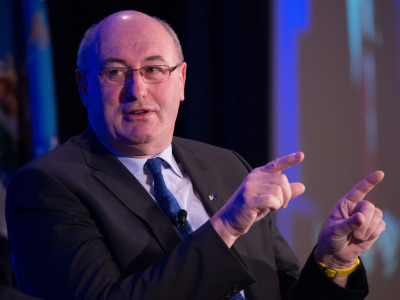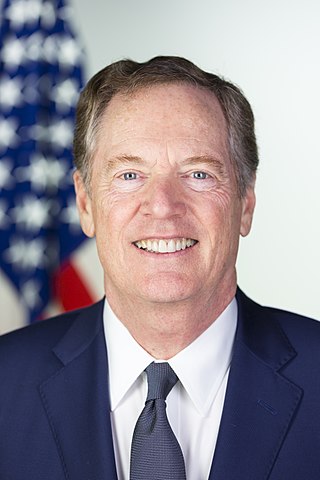The European Union is now willing to restart negotiations on beef trade with the U.S., but it’s still unclear if the Europeans will be willing to include any other agriculture issues in the ongoing talks aimed at avoiding an all-out trans-Atlantic trade war.
EU Agriculture Commissioner Phil Hogan announced last week that the European Commission has formally requested a mandate from the European Council to renegotiate U.S. access to the Europe’s beef market.
"By requesting this mandate... the Commission is delivering on an engagement taken earlier this year to try to address some concerns raised by the United States on the functioning of the quota in a mutually satisfactory solution that is fully in line with WTO rules,” Hogan said. “By taking this step, we are also contributing to ease tensions across the Atlantic, in line with the agreement reached by (European Commission President Jean-Claude) Juncker in July.”

EU Agriculture Commissioner Phil Hogan
The announcement was a positive sign for the U.S. beef sector, which has been virtually shut out of the lucrative European market, but it’s also not the first time this year that hopes were high for progress.
Back in January, talks between U.S. and European negotiators were running smoothly when Ag Secretary Sonny Perdue told Agri-Pulse that he expected an imminent breakthrough.
“We're still negotiating with the EU over a hormone-free quota and we think we’ll have some resolution … soon,” Perdue said in an interview at the time.
U.S. Trade Representative Robert Lighthizer and his crew were in serious talks with the Europeans then and the prospects looked good to fix a trade deal that long ago turned sour for U.S. producers and exporters.
The World Trade Organization 20 years ago sided with the U.S. and its complaint that the EU ban on U.S. beef produced from cattle treated with growth hormones broke WTO commitments, but that ruling has done very little for the U.S.
The EU vowed to continue its ban no matter what. Instead of hitting Europe with retaliatory tariffs – which was its right – the U.S. agreed to negotiate. U.S. negotiators knew that even if the EU relented on the hormone issue, the Europeans could keep imports out with tariffs.
After years of talks, the U.S. agreed to a European proposal to set up a 45,000-ton quota that would allow the U.S. to export beef to EU countries without the normal steep tariffs.
Through great expense and effort, U.S. ranchers began raising cattle that could be documented to be hormone-free and eventually exported to European buyers. That did not last long, though, because the EU began allowing other countries like Australia, New Zealand, Uruguay and Argentina to ship beef under the tariff rate quota.
Despite Hogan’s announcement last week that the EU is willing to begin negotiations again, he said that does not mean the overall 45,000-ton TRQ will be increased; nor does it mean Europe will agree to import beef from cattle treated with hormones.
Interested in more news about the farm bill, trade issues, pesticide regulations and more hot topics?
Sign up here for a four-week Agri-Pulse free trial. No risk and no obligation to pay.
“As we send this proposal to the Council, I want to reassure European producers that the already existing beef quota under the Memorandum of Understanding will remain at exactly the same level,” he said. “And I want also to reassure our consumers that the said quota will continue to cover only products complying with Europe's high food safety and health standards, in this case only non-hormone treated beef."
What Europe will likely agree to, according to one source close to the talks, is a dedicated smaller quota for the U.S. within the overall quota of 45,000 tons.

USTR Robert Lighthizer
“We’ve been concerned the way the quota operates, we’re not getting our fair share, so we are looking for them to find a way to make sure we get our fair share,” the source said.
But even if that happens, there are still many outstanding European barriers and regulations that continue to frustrate American farmers and ranchers, U.S. trade negotiators and farm state lawmakers say.
It was not long after that July 25 meeting between Trump and Juncker that the U.S. and EU began sparring over whether or not agriculture issues would be included in the trade talks agreed upon by the two presidents. U.S. officials, including Perdue, insisted they should be part of the talks, while EU officials balked at the idea.
Lighthizer returned Monday from talks in Brussels, where a spokesperson said he had “a constructive meeting with (EU Trade Commissioner Cecilia) Malmström to initiate the Executive Working Group to improve trade relations between the United States and the European Union.”
The USTR statement did not address specific topics and the word “agriculture” was not used, but American Farm Bureau Federation Senior Director David Salmonsen tells Agri-Pulse that he expects the USTR to pour the pressure on in the coming weeks.
“The ag issues are the same – all their stuff that keeps out our beef, pork and chicken,” Salmonsen said. The fact that the USTR is now saying it will use its Trade Promotion Authority (TPA) to finalize a deal with Europe, suggests that the U.S. will be pushing Europe to lower its ag trade barriers.
“There are a lot of ag objectives in the TPA,” he said.
One of the most vexing European barriers to U.S. agriculture is the EU’s increasingly complex and lengthy approval process for genetically modified crops.
For any one approval, both the European Food Safety Authority (EFSA) and a standing committee representing all 28 countries in the EU must give their consent. That process can take up to four years, according to U.S. industry officials.
“It’s an issue that needs to be addressed,” said Matt O’Mara, director of international affairs for the Biotechnology Innovation Organization (BIO). “We’ve called for a streamlined process – one that respects the science.”
But the European process is the opposite of streamlined, requiring separate approvals for all biotech traits and then yet another approval for a stacked trait product even if all of the individual traits have already been approved.
Farmers and ranchers shouldn’t have to wait long to know if the U.S. and EU agree to include a wide variety of agriculture issue in the talks that are expected to continue through the next two months.
“In October, professional staff will hold further discussions on identifying and reducing tariff and non-tariff barriers to trade,” the USTR said this week. “Ministers will then meet in November to finalize outcomes in a number of areas. Specifically, we hope for an early harvest in the area of technical barriers to trade.”
For more news, go to: www.Agri-Pulse.com


